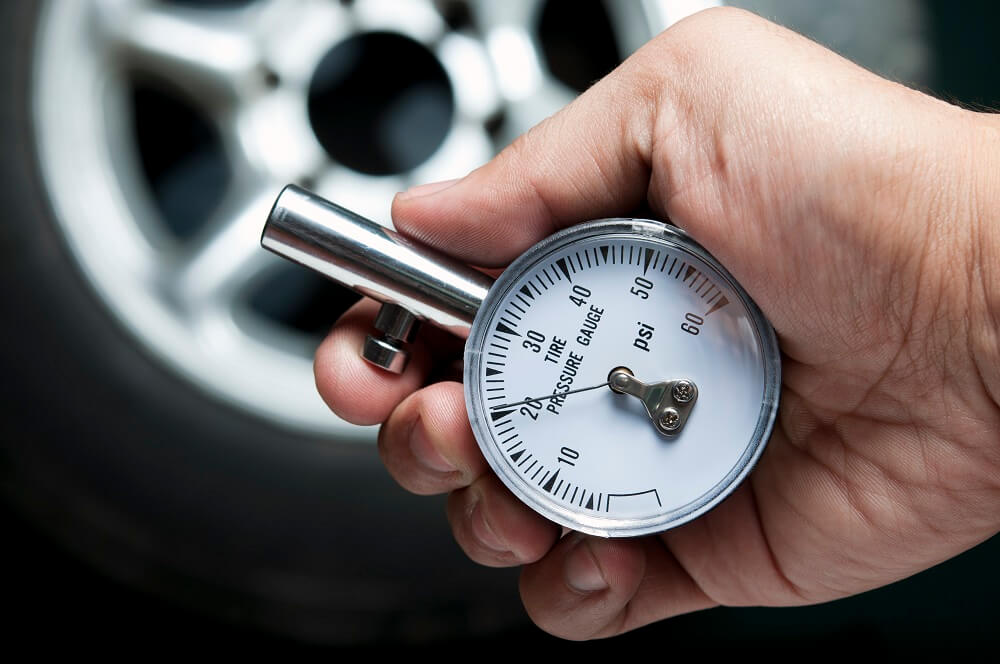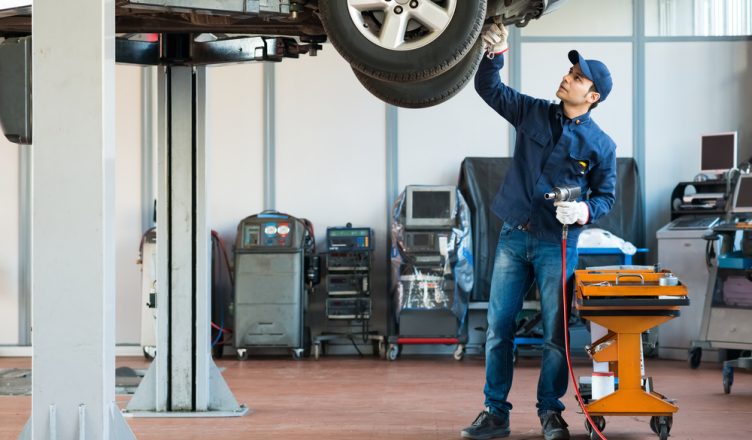Common Reasons for a Front Wheel Hard to Turn by Hand
A front wheel that is hard to turn by hand can be a common issue for many cyclists, and it can be caused by several factors. Proper bike maintenance and regular checks are crucial to ensure smooth and safe rides. The following are the most common reasons for a front wheel that is hard to turn by hand:
Firstly, tight steering bearings can make it difficult to turn the front wheel by hand. Steering bearings are responsible for providing smooth and easy movement of the handlebars, and if they become too tight or worn out, they can cause resistance and stiffness in the front wheel. Regular inspection and adjustment of the steering bearings can prevent this issue and ensure the proper functioning of the bike.
Secondly, low tire pressure can also contribute to a front wheel that is hard to turn by hand. Tire pressure plays a significant role in the ease of turning the front wheel, and if the tires are not inflated to the recommended pressure levels, they can become soft and difficult to turn. Checking and maintaining the recommended pressure levels can prevent this issue and improve the overall performance and safety of the bike.
Lastly, damage to the wheel rim can affect the wheel’s ability to turn freely. A damaged wheel rim can cause resistance and stiffness in the front wheel, making it hard to turn by hand. Regular inspection and maintenance of the bike’s components, including the wheel rim, can prevent this issue and ensure the longevity and safety of the bike. Using high-quality bike parts and components can also reduce the risk of damage and ensure the best performance and durability of the bike.
Inspecting the Steering Bearings
Steering bearings are an essential component of a bike’s front wheel, and they play a crucial role in ensuring smooth and easy movement of the handlebars. If the steering bearings become too tight or worn out, they can cause resistance and stiffness in the front wheel, making it hard to turn by hand. Here are the step-by-step instructions on how to inspect the steering bearings for tightness or wear and adjust or replace them if necessary:
- Start by turning the handlebars from side to side and checking for any resistance or stiffness in the front wheel. If you feel any resistance or stiffness, it may indicate that the steering bearings are too tight or worn out.
- To inspect the steering bearings, you will need to remove the front wheel and stem cap. Use a wrench to loosen the stem cap and remove the handlebars and stem from the bike.
- Once you have removed the front wheel and stem, you can inspect the steering bearings for any signs of wear or damage. Check for any play or movement in the bearings, as well as any rust or corrosion.
- If the steering bearings are too tight, you can adjust them by loosening the pinch bolts on the stem and turning the stem to adjust the bearing tension. Tighten the pinch bolts once you have achieved the desired tension.
- If the steering bearings are worn out or damaged, you will need to replace them with new ones. You can purchase new steering bearings from a bike shop or online retailer. Follow the manufacturer’s instructions for installation and adjustment.
Regular inspection and adjustment of the steering bearings can prevent issues with the front wheel’s turning ability and ensure the proper functioning of the bike. It is essential to use high-quality bike parts and components to ensure the best performance and longevity of the bike. If you are unsure about inspecting or adjusting the steering bearings, seek professional help from a bike mechanic or shop.
Checking the Tire Pressure
Tire pressure plays a significant role in the ease of turning the front wheel of a bike. Proper tire pressure ensures a smooth and safe ride, while low or high tire pressure can make it hard to turn the front wheel by hand. Here are some tips on how to check and maintain the recommended tire pressure levels:
- Check the recommended tire pressure levels for your bike’s tires, which can usually be found on the sidewall of the tire or in the bike’s manual. The recommended tire pressure levels vary depending on the bike’s type, terrain, and rider’s weight.
- Use a tire pressure gauge to check the tire pressure. You can purchase a tire pressure gauge from a bike shop or online retailer. Insert the gauge into the valve stem and press down to get a reading. Compare the reading with the recommended tire pressure levels.
- If the tire pressure is too low, use a bike pump to inflate the tire to the recommended pressure levels. Make sure to follow the manufacturer’s instructions for inflation.
- If the tire pressure is too high, release some air by pressing the valve core with a small tool or your finger. Check the tire pressure again with the gauge and adjust as necessary.
- Check the tire pressure regularly, especially before long rides or after extended periods of non-use. Regularly checking the tire pressure can prevent issues with the front wheel’s turning ability and ensure the best performance and safety of the bike.
Riding with underinflated or overinflated tires can be dangerous and can cause damage to the tires and rims. Proper tire pressure ensures optimal traction, handling, and comfort while riding. It is essential to use high-quality bike parts and components, including tires and inner tubes, to ensure the best performance and longevity of the bike.
Inspecting the Wheel Rim
Damage to the wheel rim can affect the wheel’s ability to turn freely and may be a reason why your front wheel is hard to turn by hand. Here are some tips on how to identify and fix such damage:
- Inspect the wheel rim for any signs of damage, such as dents, cracks, or bends. These can occur due to impacts, such as hitting a pothole or curb, or general wear and tear.
- If the wheel rim is slightly damaged, you may be able to true it using a spoke wrench and tension meter. Trueing the wheel rim involves adjusting the tension of the spokes to ensure the wheel is running straight and smoothly.
- If the wheel rim is severely damaged, it may need to be replaced. You can purchase a new wheel rim from a bike shop or online retailer. Make sure to choose a high-quality wheel rim that is compatible with your bike and riding style.
- When replacing the wheel rim, make sure to also replace the spokes and nipples to ensure a proper tension and alignment. Improperly tensioned or aligned wheels can cause further damage to the wheel rim and other bike components.
- Regularly inspecting and maintaining the wheel rim can prevent issues with the front wheel’s turning ability and ensure the best performance and safety of the bike. It is essential to use high-quality bike parts and components, including wheel rims and spokes, to ensure the best performance and longevity of the bike.
Using low-quality wheel rims or neglecting regular maintenance can lead to damage and issues with the front wheel’s turning ability. Proper wheel rim maintenance, including regular inspection, truing, and replacement, can prevent such issues and ensure a safe and enjoyable ride. If you are unsure about inspecting or fixing the wheel rim, seek professional help from a bike mechanic or shop.
Seeking Professional Help
If you have tried the DIY solutions for fixing a front wheel that is hard to turn by hand and they have not worked, or if the problem persists, it may be time to seek professional help from a bike mechanic or shop. Here are some reasons why seeking professional help is important:
- Expertise and Experience: Bike mechanics and shops have the expertise and experience to diagnose and fix complex bike issues, including a hard-to-turn front wheel. They have the necessary tools and equipment to perform accurate inspections, adjustments, and repairs.
- Safety: Properly diagnosing and fixing a hard-to-turn front wheel is crucial for ensuring the safety of the rider. A malfunctioning front wheel can cause accidents, injuries, and even death. A professional bike mechanic or shop can ensure that the bike is safe to ride and that all components are functioning properly.
- Time and Convenience: Taking your bike to a professional mechanic or shop can save you time and hassle. You won’t have to spend hours trying to diagnose and fix the problem yourself, and you can rest assured that the job will be done right the first time.
- Warranty and Guarantee: Many bike mechanics and shops offer warranties and guarantees on their work, giving you peace of mind and protection against future issues. If the problem persists or if a new issue arises, you can take your bike back to the shop for further inspection and repair.
- Preventive Maintenance: A professional bike mechanic or shop can also provide preventive maintenance services, such as tune-ups, inspections, and adjustments, to ensure that your bike is running smoothly and safely. Regular preventive maintenance can prevent future issues and extend the lifespan of your bike.
When choosing a bike mechanic or shop, make sure to do your research and choose a reputable and experienced one. Ask for recommendations from other cyclists, read online reviews, and check the shop’s credentials and certifications. Don’t be afraid to ask questions and communicate your concerns and needs. A good bike mechanic or shop will be happy to provide expert advice and service to maintain the safety and performance of your bike.
Preventive Maintenance Tips
Preventive maintenance is key to avoiding future issues with the front wheel’s turning ability and ensuring a smooth and safe ride. Here are some tips on how to perform preventive maintenance on your bike:
- Cleaning: Regularly clean your bike to remove dirt, debris, and grime that can accumulate on the bike’s components and cause wear and tear. Use a bike cleaner and a soft brush to gently clean the bike’s frame, wheels, and components. Make sure to dry the bike thoroughly to prevent rust and corrosion.
- Lubrication: Lubricate the bike’s chain, derailleur, and other moving parts to ensure smooth and quiet operation. Use a high-quality bike lubricant and follow the manufacturer’s instructions for application. Avoid over-lubrication, as it can attract dirt and grime and cause additional wear and tear.
- Adjustment: Regularly adjust the bike’s components, such as the brakes, derailleur, and shifters, to ensure proper alignment and function. Use a bike multitool to make adjustments and follow the manufacturer’s instructions for proper adjustment.
- Inspection: Regularly inspect the bike’s components, such as the tires, wheels, and brakes, for signs of wear and tear. Look for cracks, cuts, and other damage that may require replacement or repair. Make sure to tighten any loose bolts or screws and replace any worn-out components.
- Storage: Store your bike in a dry and secure location to prevent damage from weather, theft, and other hazards. Use a bike cover or store the bike indoors if possible. Avoid exposing the bike to extreme temperatures or humidity, as it can cause damage to the bike’s components.
Regular preventive maintenance can improve the performance, safety, and longevity of your bike. It can also help you identify and fix potential issues before they become major problems. Make sure to follow the manufacturer’s instructions for maintenance and repair and consult with a professional bike mechanic or shop if you are unsure about any aspect of bike maintenance.
Choosing the Right Bike for Your Needs
Choosing the right bike for your needs and riding style can affect the ease of turning the front wheel and the overall bike maintenance. Here are some tips on how to select the best bike based on factors such as terrain, frequency of use, and budget:
Terrain
Consider the type of terrain you will be riding on when choosing a bike. For example, if you will be riding on rough terrain, such as mountains or trails, you may want to choose a mountain bike with sturdy tires and suspension. If you will be riding on smooth terrain, such as pavement or bike paths, you may want to choose a road bike with thin tires and a lightweight frame.
Frequency of Use
Consider how often you will be using the bike when choosing a bike. If you will be using the bike frequently, you may want to choose a high-quality bike with durable components and a comfortable riding position. If you will be using the bike occasionally, you may want to choose a more affordable bike with basic features.
Budget
Consider your budget when choosing a bike. Bikes can range in price from a few hundred dollars to several thousand dollars. Determine how much you are willing to spend on a bike and look for bikes within that price range. Keep in mind that a more expensive bike may have better components and a longer lifespan, but a more affordable bike may be sufficient for your needs.
Additional Features
Consider additional features when choosing a bike, such as gears, brakes, and suspension. Gears can help you navigate hills and rough terrain, while brakes can help you stop safely. Suspension can help absorb shocks and provide a smoother ride. Look for bikes with features that meet your needs and preferences.
By considering these factors, you can choose a bike that is easy to turn, comfortable to ride, and requires minimal maintenance. Remember to also perform regular checks and maintenance on your bike to ensure its safety and longevity.
Staying Informed and Updated
Staying informed and updated about the latest bike technologies, trends, and best practices in bike maintenance and repair is crucial for ensuring the safety and performance of your bike. Here are some reliable sources of information and advice:
Bike Magazines
Bike magazines are a great source of information and advice on bike maintenance and repair. They often feature articles on the latest bike technologies, trends, and best practices, as well as product reviews and how-to guides. Some popular bike magazines include Bicycling, Road Bike Action, and Mountain Bike Action.
Websites
There are many websites that provide information and advice on bike maintenance and repair. Some popular websites include Bicycle Tutor, Park Tool, and Sheldon Brown. These websites offer step-by-step guides, videos, and other resources to help you maintain and repair your bike.
Forums
Bike forums are a great place to connect with other cyclists and get advice on bike maintenance and repair. You can ask questions, share tips, and learn from other cyclists’ experiences. Some popular bike forums include Bike Forums, MTBR, and Pinkbike.
Social Media Groups
Social media groups are another great place to connect with other cyclists and get advice on bike maintenance and repair. You can join groups on platforms such as Facebook, Twitter, and Instagram, and ask questions, share tips, and learn from other cyclists’ experiences. Some popular social media groups include Bike Radar, Bicycling Magazine, and Singletracks.
By staying informed and updated about the latest bike technologies, trends, and best practices, you can ensure the safety and performance of your bike, and avoid issues such as a front wheel that is hard to turn by hand. Remember to also perform regular checks and maintenance on your bike to ensure its longevity and performance.





